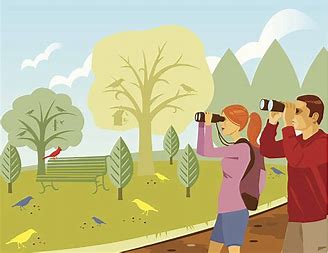FEEL LIKE YOU’RE BECOMING MORE OF A NATURALIST?

Our last few ID challenges have been tough, with plenty of organisms that are rarely encountered unless one is going out directly searching for them–at the right time of year, in the right type of habitat, and looking in just the right places. Never mind the fact that you’re trying to identify them from a single photograph, with no behavior to observe, no other angles from which to view, and no knowledge about the where or when of that particular snapshot.
Doing identifications on iNaturalist (as we’ll be doing next week at this time!) is rarely this difficult. Many folks tend to stay more or less in their area of expertise (herps, birds, plants, etc.) and don’t try to tackle the broad spectrum of diversity in nature. Furthermore, it helps that many participants try to upload more than one photo of the same organism, if they can. Each documentation will also indicate the exact time and location of the picture, which will provide useful context. In other words, if you’re doing pretty well on our current quizzes, you’re more than ready for the ID tasks ahead–especially this year, when most of us will be documenting only what we find in our suburban neighborhoods–not traipsing out into the wildest sections of the Gunpowder Falls or Prettyboy Reservoir or Hart-Miller Island. The vast majority of encounters will be with fairly common and recognizable critters, since our City Nature Challenge has been, out of necessity–thank you COVID-19, redefined as a Backyard Nature Challenge.
Still, if you’ve come this far with our series of nature ID practice, you’ve got to continue; you can’t stop now! We only have a few more days to work on our natural history skills, with the greatest challenges on the upcoming final three quizzes. Good luck!

TIME FOR YOUR DAILY CHECK ON THE PREVIOUS ID QUIZ. The following 12 organisms were pictured on day 7:
- White-throated Sparrow — shy woodland visitor from the north; winters in MD in large #’s, but hangs out in brush piles and not so easy to see; white throat and black-and-white crown stripes become sharp and crisp for spring breeding season, when males sing “Old-Sam-Peabody, Peabody, Peabody!”
- Virginia Creeper — aggressive, woody vine that can grow under a wide range of conditions; sometimes confused for poison ivy, but it has FIVE ‘fingers’, not three; small grape-like berries that are poisonous to humans but important food source for many birds
- Pickerel Frog — recognized by large semi-rectangular blotches on back; rarely visible, but inside of hind legs is bright yellow-orange; only native American frog species whose skin secretes toxins to ward off predators
- Southern Flying Squirrel — tiny (weigh about 4 oz when fully grown) and adorable; nocturnal–with huge eyes to prove it!; can glide great distances on large parachute-like ‘patagium’, stretched between front and hind legs; more common than most of us know (I’ve seen them in Mt. Washington)
- Yellow Garden Spider — makes a statement in bold ‘Pittsburgh Steeler’ colors; an orb-weaver (makes a large circular web) and creates unusual zig-zag pattern within it; hangs head-down in the web waiting for prey
- Cardinal Flower — unmistakable; tall spikes of brilliant red flowers; complicated, trumpet-shaped flowers are a favorite of hummingbirds; require fairly moist soil; grows readily near forest ponds
- Eastern Black Walnut — deciduous hardwood tree with dark, deeply-grooved bark–forming almost a diamond pattern; male flowers (shown in photo) bloom in spring, during leaf-out, and form long, hanging catkins; be careful walking under this tree in late fall–edible nuts are large and can hurt!
- Differential Grasshopper — large (~2 inches long) and generally olive in color; trademark is the black ‘herringbone’ pattern on the back legs; not a favorite of farmers, as they can do a number on crops
- Barn Swallow — common in warmer half of year, but usually seen in flight, not sitting; aerial acrobatics are impressive, aided by long, forked tail; nests on underside of man-made structures, like garages, carports, docks, etc.
- Red-spotted Purple — the southern form of a species with two very different-looking races; in New England, they’re called ‘White Admirals’ and have broad white bands on both wings; southern is bluish on top, more brown on underside, with orange bars and 3 orange spots; intermediate forms in areas where they overlap
- Spotted Salamander — surprisingly large (6-8 inches); dark background can vary from black to brown to very dark blue or green, but always with two rows of prominent yellow-gold spots; nocturnal and remain hidden, under logs, rocks, or leaf litter, except during times of rainfall
- Red-shouldered Hawk — slightly smaller woodland cousin of the Red-tailed Hawk; occupies the ‘day shift’ while Barred Owl takes the ‘night shift’ role of the same niche; a southern bird that is quite common in MD but oddly uncommon above the Mason Dixon Line
Onward, amateur naturalists . . .

